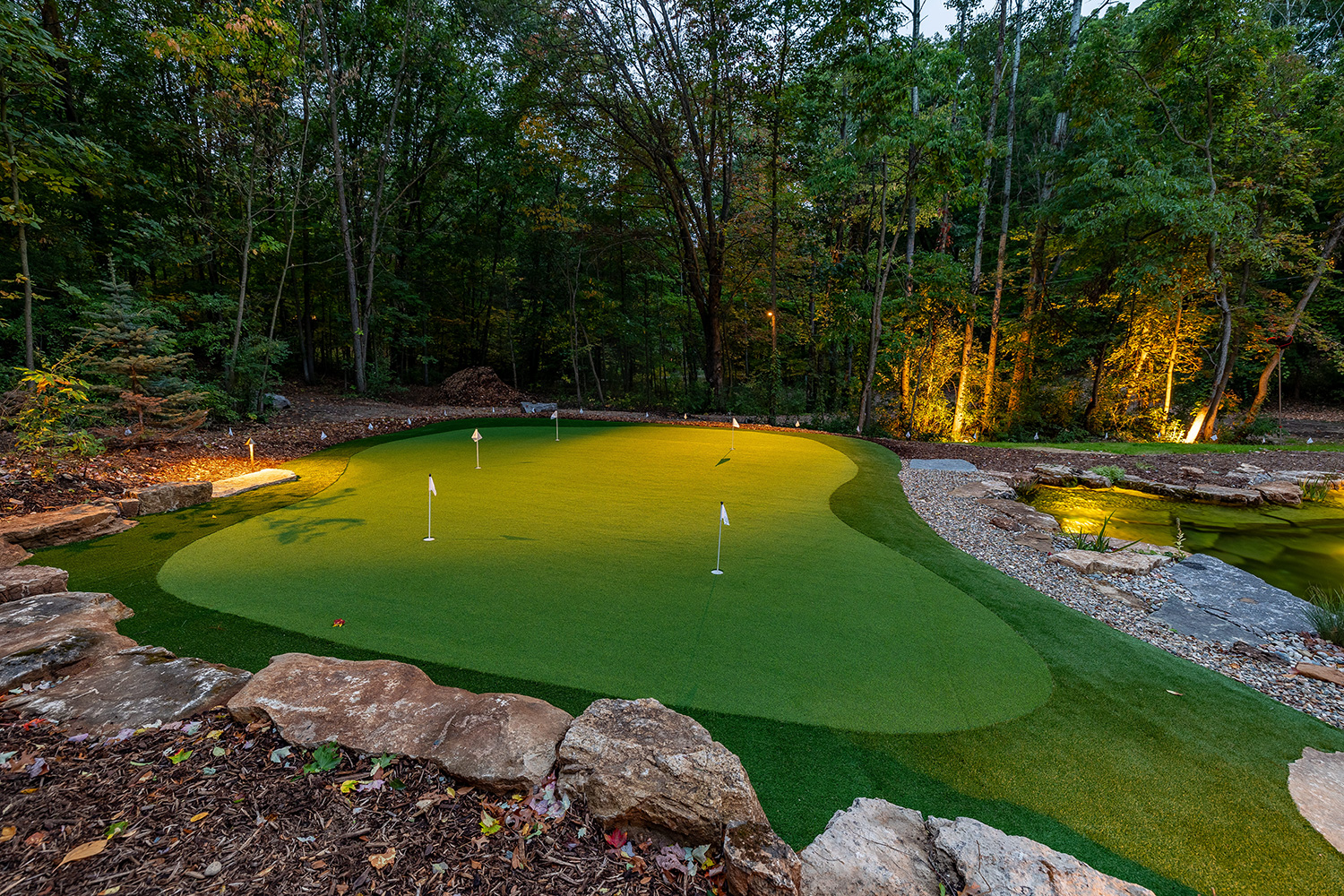A backyard putting green is the dream landscaping upgrade for many golf enthusiasts, and for good reason! An artificial turf putting green is not only a fantastic way to help improve your short game but is also a catalyst to spending more time outdoors with your family and friends. Plus, there’s no need to drive all the way to the golf course to enjoy it. Finally, artificial turf maintenance is much easier than natural grass! In this article, we’ll show you some things to think about when designing your backyard green.
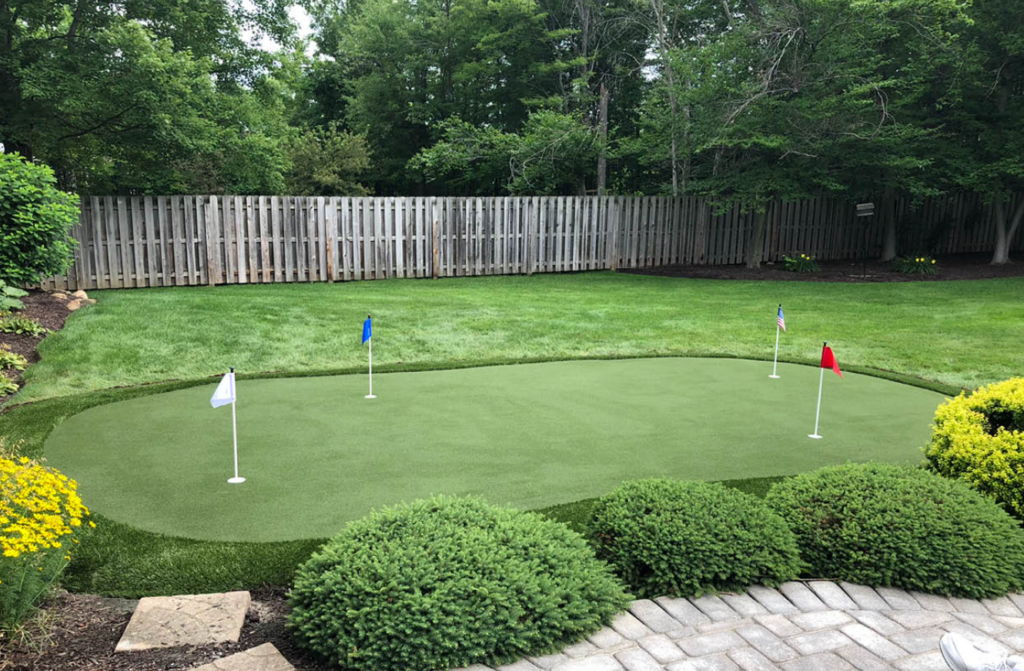
#1 Location
The first few decisions to make are on the size and location of the intended green. These decisions should go hand in hand because your green should look like it fits into a space without dominating your entire backyard. When thinking about location consider environmental factors such as overhead trees and branches, direction of the sun, and the most common wind direction. Also, a location that is easy to access and not too far away from other outdoor features, such as decks, patios, or outdoor seating areas. The closer in proximity to your home and outdoor living spaces, the more often you will use it!
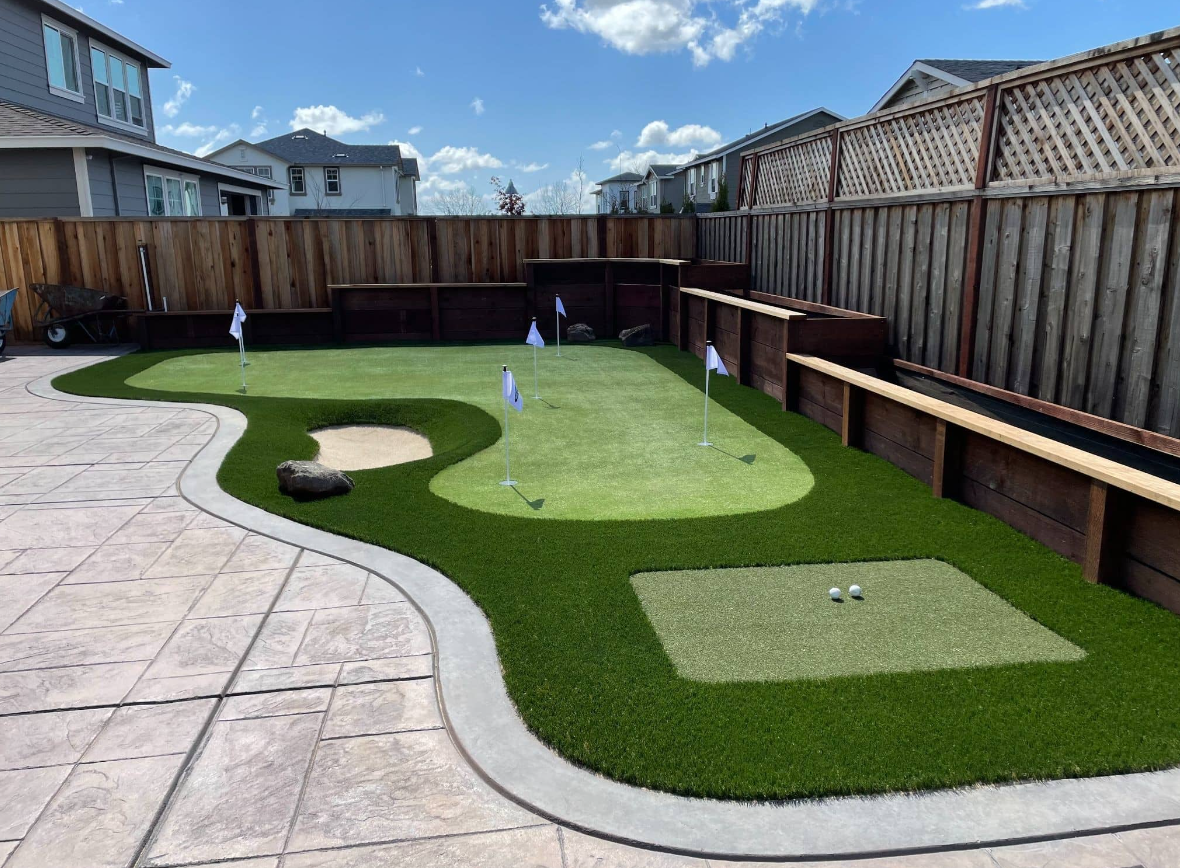
#2 Size & Shape
The size of your Putting Green should reflect how you intend to use it. Are you planning on chipping onto the green? The further away you intend to chip from, the larger the green needs to be for the ball to land. Larger greens also allow for more contours and breaks, increasing the challenge and providing the opportunity to add extra cups. Your imagination is the only limit when it comes to the shape of an artificial turf putting green. Since the turf can be trimmed and seamed it can easily be fitted to curves, straight edges, and corners. The shape of the green can help to add complexity to your short game and chip shots alike while also making the turf more visually appealing.
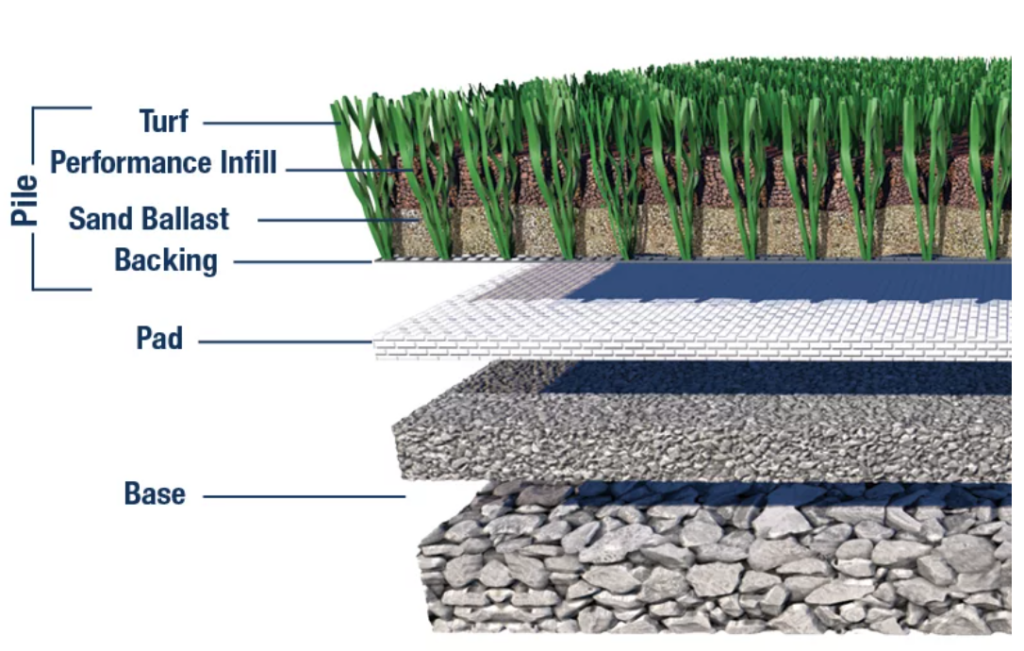
#3 Sub-grade/drainage
It is very important your Putting Green is built with the proper sub-grade for drainage. Putting Greens are not typicall DIY projects, as a lot goes into the sub-grade to ensure its durabilty and appropriate drainage. We recommend a base layer of Geotextile fabric, 4-6″ of clean crushed 1” stone compacted, and a top layer of 1’-2” of masonry sand compacted. The top layer is crucial for smooth contours and minor breaks for realistic putting sceniorios. Finally, the installation of silica sand in the fibers of the artificial turf resembles realistic putting greens and can be used to control the speed of the greens. In most cases approx 1lb of sand per square foot is recomended but can very based on different manufacturer specifications.
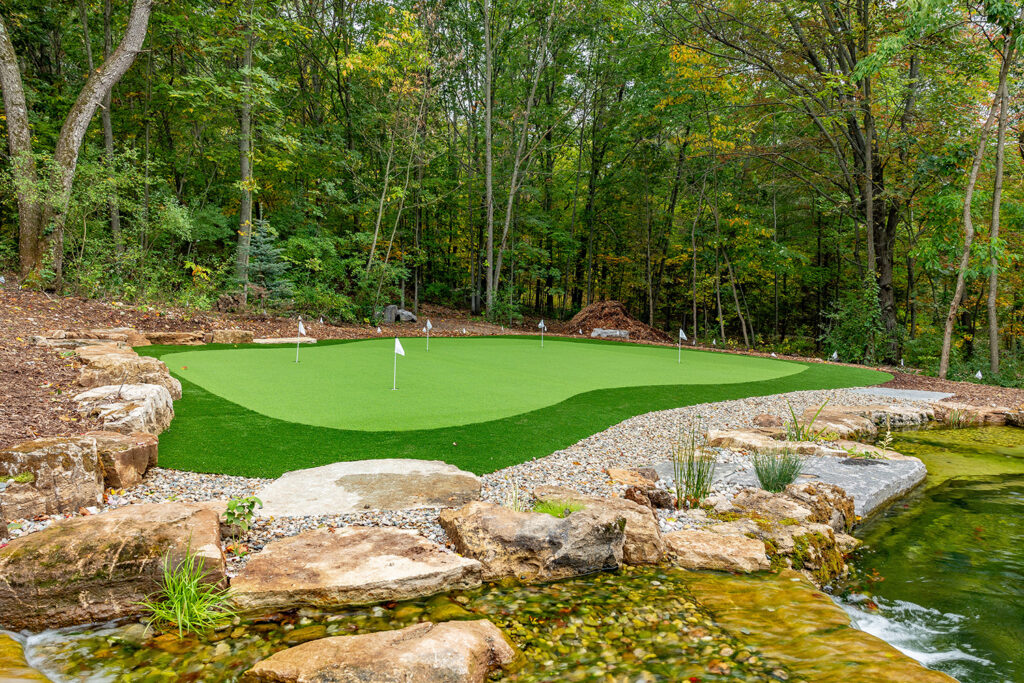
#4 Additional Features
Additional features near the green will make playing even more enjoyable. Think of a real course, some holes have sand traps while others might have water hazards or doglegs. These hazards make the game more challenging while also adding visual interest to the course. A backyard putting green can incorporate many of these hazards by adding a koi pond or pondless waterfall near the edge of the turf or incorporating a real sand trap into the fringe.
An Artificial turf putting green is the ideal backyard upgrade for the avid golfer. Instead of driving to the course or range and waiting for the next available tee time you can just walk out of your backdoor and practice whenever you’d like. Not only will a backyard green improve your short game quickly but it will add a lot of visual interest to your outdoor space. Combining the green with a patio, firepit, or outdoor kitchen transforms your yard into a place where people really want to hang out and socialize.

